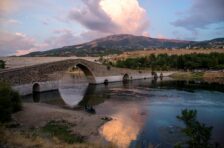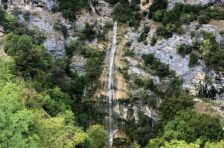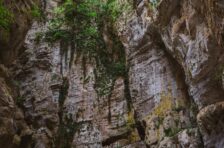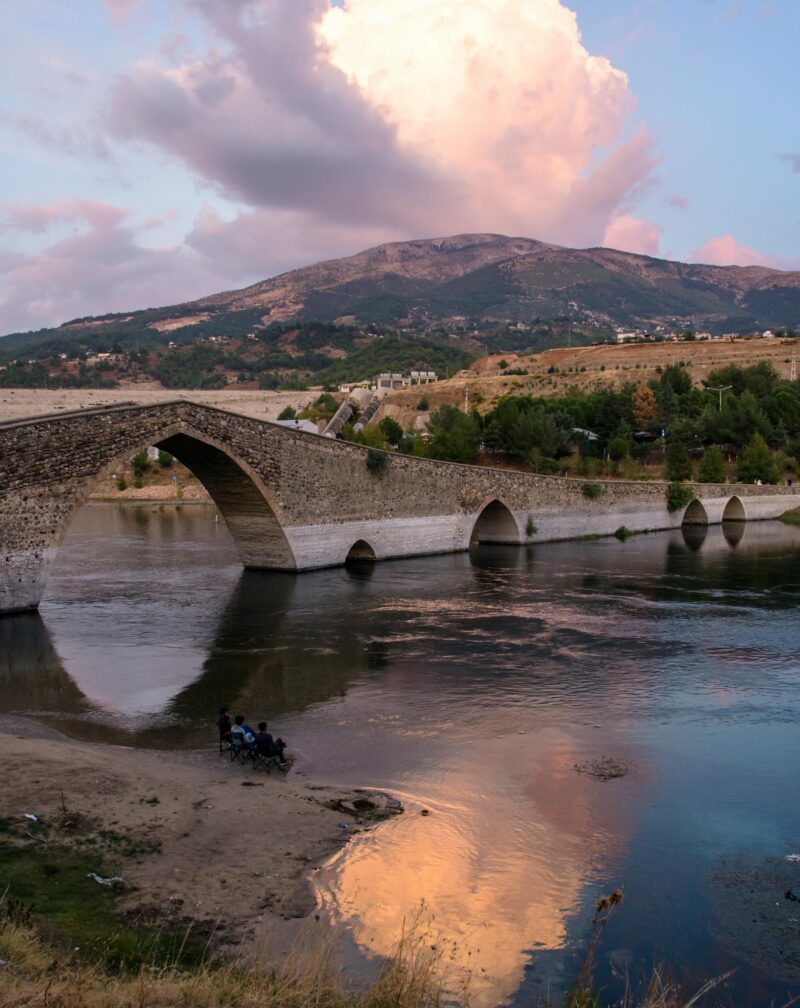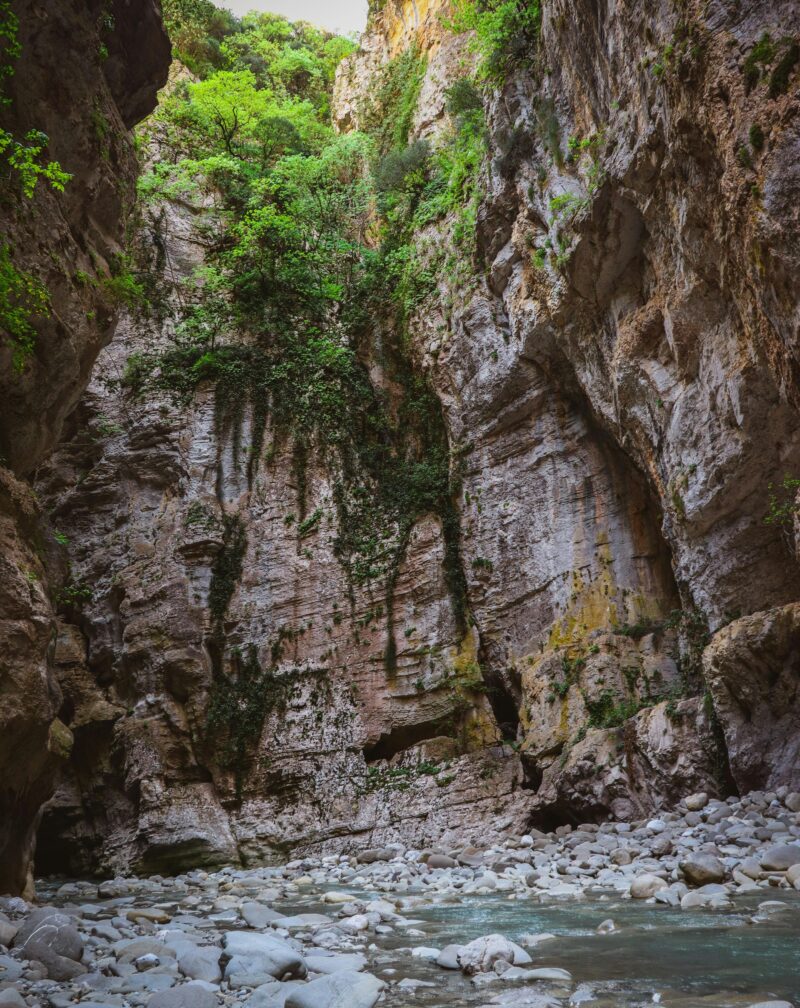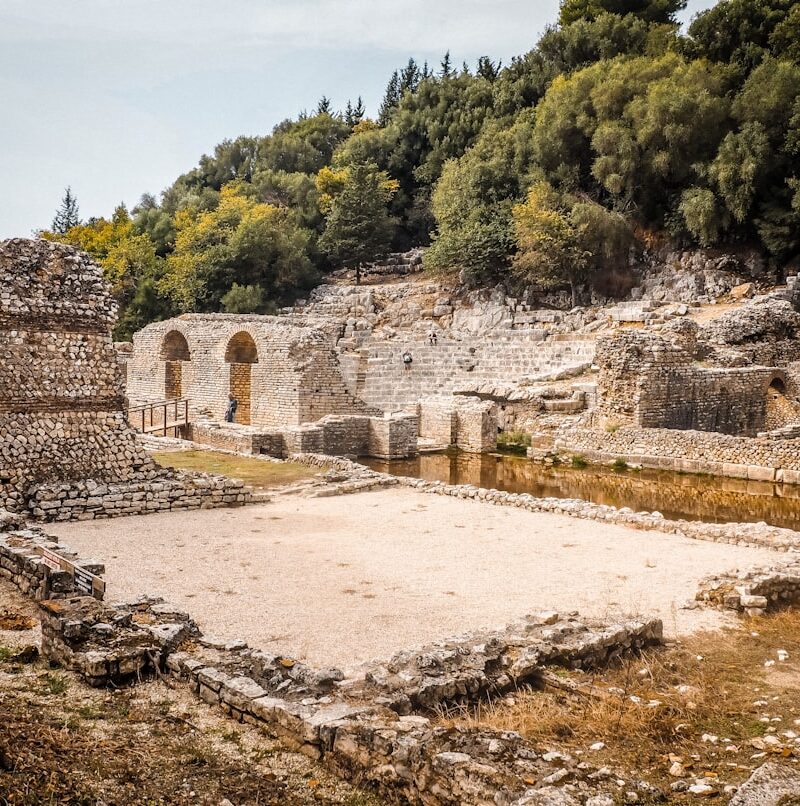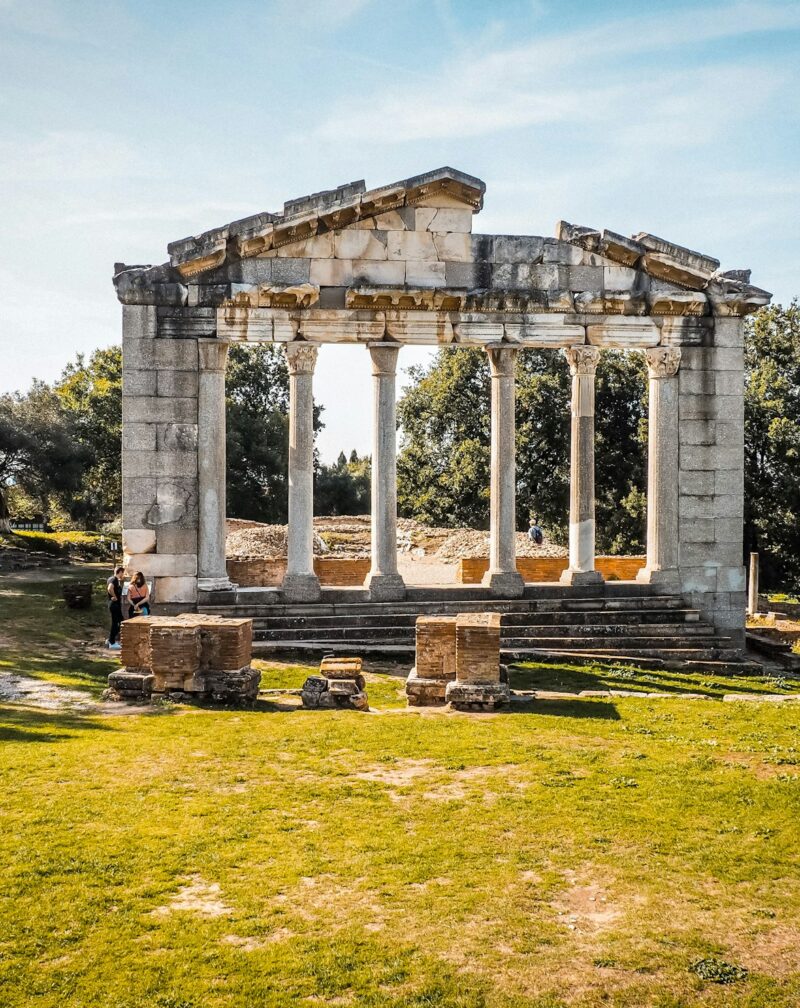The Fortress Town
Elbasan sits in central Albania along the ancient Via Egnatia—the Roman road connecting the Adriatic to Constantinople. Historically significant, militarily strategic, yet today relatively off tourist radar. Most travelers pass through Elbasan without stopping, heading to Ohrid or Korçë or Tirana. Those who do stop discover a town with surprising depth beneath its industrial exterior.
The Castle (Kalaja e Elbasanit)
Elbasan’s defining feature—massive fortress walls encircling the old town center. The walls date to Roman period (built by Emperor Justinian I, 6th century AD), constructed along Via Egnatia to protect this strategic position.
The walls are impressive—thick stone, towers at intervals, gates providing controlled access. Much of the circuit survives, making it one of Albania’s best-preserved urban fortresses.
Walking the Walls You can walk sections of the ramparts, gaining elevated views over town and understanding defensive layout. The walls show different construction periods—Roman foundations, Ottoman modifications, modern repairs.
Clock Tower (Kulla e Sahatit) Ottoman-era tower within fortress, built 1821. It’s not remarkable architecturally but serves as landmark and vantage point. Climbing provides views over the old town.
King Mosque (Xhamia e Mbretit) One of Albania’s oldest mosques, built 1492 shortly after Ottoman conquest. The mosque is significant architecturally and historically—surviving over 500 years despite multiple reconstructions.
It follows classical Ottoman design with single minaret and domed prayer hall. Interior decorations are relatively simple but elegant.
The mosque remained active through most of communist period (rare exception to widespread religious suppression), protected due to architectural significance. This makes it unusual survival.
Visitors welcome outside prayer times. Standard mosque etiquette applies.
Inside the Fortress
Within castle walls, old town preserves some traditional architecture—Ottoman-era houses, narrow lanes, neighborhood atmosphere. Much has been modernized or replaced, but fragments of old Elbasan remain.
Walking the interior reveals:
- Residential areas with mixed old and new construction
- Small shops serving local residents
- Cafes where locals gather
- Churches and mosques coexisting
- Layers of history embedded in urban fabric
It’s not spectacular or pristinely preserved like Berat’s quarters. It’s working neighborhood where people live in historically significant space.
St. Mary’s Orthodox Church
Within fortress, this church represents Christian presence in predominantly Muslim Ottoman town. Multiple churches existed historically; this one survived with various reconstructions.
The church is modest in size but important to local Orthodox community. Interior icons and decorations follow Byzantine tradition.
Ethnographic Museum
Small museum displaying traditional Albanian life from Elbasan region:
- Clothing and textiles
- Household items and tools
- Traditional crafts
- Historical photos
- Information about Elbasan’s history and culture
It’s not large or modern, but it provides local context. Entry is few hundred lek. Allow 30-45 minutes.
Via Egnatia
Though you can’t see obvious road ruins, understanding that you’re standing on ancient route connecting empires adds significance to Elbasan.
The Via Egnatia ran from Durrës (ancient Dyrrachium) through Elbasan, continuing east to Thessaloniki and Constantinople. For centuries, this was major artery for trade, armies, ideas.
Elbasan’s strategic position at river crossing explains why Romans, Byzantines, and Ottomans all fortified it. Some stones you walk on might have supported Roman feet, Byzantine pilgrims, Ottoman soldiers.
Ballokume Festival – Summer Day
Elbasan is center of Dita e Verës (Summer Day) celebration on March 14. This pre-Christian tradition celebrating spring’s arrival has special significance here.
The traditional sweet ballokume is particular to Elbasan—cookies made with butter, eggs, sugar, vanilla, regional specialty prepared for this day.
If visiting mid-March, you’ll experience the festival—families making ballokume, public celebrations, traditional music, people gathering in parks and squares. It’s authentic Albanian cultural event, not staged for tourists.
Shkumbin River
River running through Elbasan creates north-south linguistic divide in Albania—northern Gheg dialect versus southern Tosk dialect. Elbasan sits at this transition.
Walking along river provides pleasant break from urban streets. Parks line portions, locals fish, children play. It’s where Elbasan relaxes.
Industrial Reality
Elbasan has significant steel and metallurgy industry—factories, smokestacks, industrial infrastructure. During communist period, it was major industrial center. Post-communism, industry declined but hasn’t disappeared.
This industrial character shapes the city—it’s working town, not tourist destination. The aesthetic is functional rather than beautiful. Pollution has been issue historically (improving now but still present).
For some visitors, this industrial reality is off-putting. For others, it’s honest representation of Albanian economic life beyond tourism.
Why Visit Elbasan?
Fair question. Elbasan isn’t on standard tourist routes. It doesn’t have UNESCO designation or famous attractions.
But it offers:
- Significant fortress with well-preserved walls
- Ancient history connected to Via Egnatia
- One of Albania’s oldest mosques
- Authentic Albanian town functioning independent of tourism
- Strategic location between Tirana, Ohrid, Korçë
- Cultural traditions like Ballokume festival
- Real Albania without tourist adaptation
Elbasan works as:
- Transit stop between destinations
- Day trip from Tirana (45 minutes)
- Cultural counterpoint to tourist towns
- Historical site for Roman/Byzantine/Ottoman interested travelers
Practical Information
Getting There:
- From Tirana: 45 minutes by bus (200-300 lek)
- From Korçë: 2 hours
- From Pogradec: 1.5 hours
- On main road connecting Tirana to Lake Ohrid region
How Long: Half day covers fortress, main sights. A full day adds museums and leisurely exploration. Overnighting is unnecessary unless we use Elbasan as a base.
When to Visit: Year-round accessible. March 14 for Summer Day festival. Otherwise, any season works—Elbasan isn’t a seasonal destination.
Where to Eat: Restaurants in and around fortress serve traditional Albanian food. Qebapa (grilled meat) is a local specialty. Prices are very reasonable—Elbasan isn’t tourist-oriented.
The Elbasan Reality
Elbasan is honest Albanian town—significant historically, functioning economically, living daily life rather than existing for visitors.
It’s not going to appear in “10 Most Beautiful Albanian Towns” lists. It’s not Instagram paradise. It doesn’t have boutique hotels or trendy cafes.
What it has is substance—real fortress with real history, mosque that’s survived five centuries, walls that defended ancient road, and people living ordinary Albanian lives.
For travelers willing to look beyond surface-level prettiness, Elbasan rewards attention. The fortress alone justifies stop if you’re passing through. Spending few hours walking walls, visiting mosque, exploring old town provides perspective different from polished tourist destinations.
It’s Albania without the tourism veneer—which is exactly what some travelers seek, and others avoid. Know yourself before adding it to itinerary.




